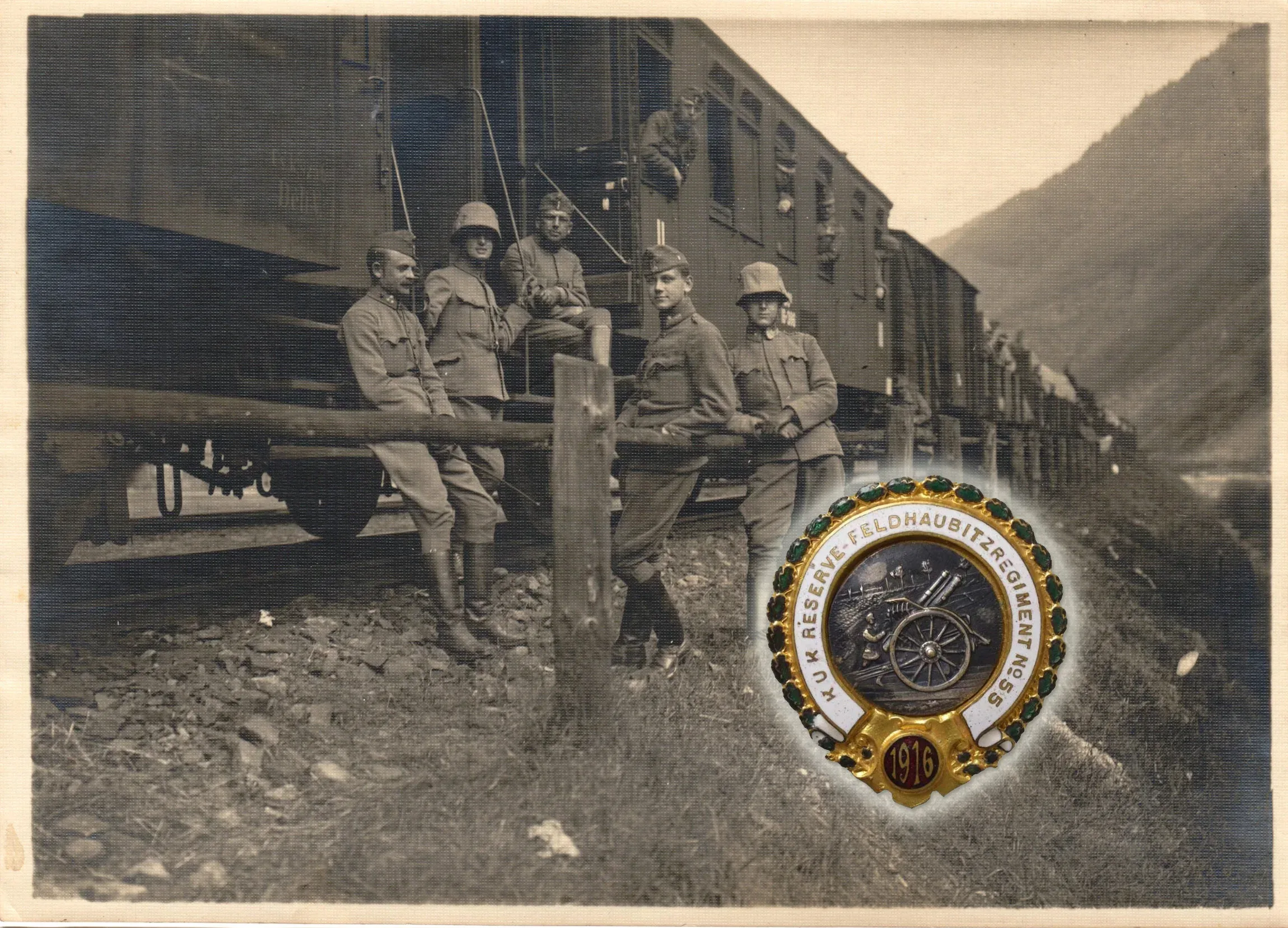55th reserve howitzer regiment
The artillery of the Monarchy underwent the greatest development during the Great War. The number of batteries and regiments set up expanded rapidly and the existing ones were often reorganized. Thus, one of the most difficult tasks is to keep track of the ever-changing artillery units.
Recently, a photo lot of a 72nd Artillery Lieutenant came to me. He served in the 72nd Heavy Artillery Regiment. The photos in the post show him. On the back of one of the cards the unit stamp and handwriting indicates, the 72nd Heavy Artillery Regiment was formed from the former 55th Howitzer Regiment. The numbering of artillery units underwent at least two fundamental changes during the war, but those regiments and brigades that were reordered to various infantry divisions could have had even more ID numbers during the Great War. This might have happened in this case.
The 72nd (formerly 55th) heavy Howitzer Regiment was formed in 1916. According to the popular search engine the Dixxon-Nuttal database, the artillery brigade belonging to the 55th division already had a heavy artillery battery in June 1916 next to the existing cannon and howitzer regiments, which was already registered with the number 55 at that time. It is possible that the heavy howitzer battery too, was formed from the 55th howitzer regiment. A year later, in July 1917, the Artillery Brigade of the 55th Division already had, according to the source, all three regiments with 4-4 batteries.

The number 55 changed then to 72 in July 1917 when the thre artillery regiments of the brigade were ordered to the 72nd division as division artillery. The 72nd Division was formed in 1916 to defend Transylvania from two uprising brigades. The 55th Artillery Brigade was commanded to them only in July 1917. The regiments kept the number 72, and from 1918 also the 72 and 172, when, after the dissolution of the 72nd Division, they became the artillery brigade of the 62nd Army Infantry Division. By this time mixed field artillery regiments were created from the batteries of the regular cannon and howitzer regiments. The first of the newly established field artillery regiments got the number of the division, the second the division number plus 100. The heavy artillery regiments got the division number as well.

The 72nd Heavy Artillery Regiment was lifted from the 72nd artillery brigade by the headquarter’s command and sent hastily to the Western Front in July 1918 at the request of the German ally. A total of 3 infantry divisions and four heavy artillery regiments formed the French contingent of the Monarchy. The 72 artillery was on duty for only 2 weeks while the ammunition stockpile brought from home lasted. Later, their supply was more of a concern, as they had virtually no combat value without ammunition.
The photographic material left behind by the lieutenant is from the early spring of 1917 to August 1918 and documents the journey of the 72nd Heavy Artillery (formerly 55 heavy howitzer) Regiment. In 1917 they settled in Galicia, near Brzezany. After that, they were withdrawn to Krakow for training and recharging, and then, according to the captions, they were taken to Tyrol in the vicinity of Bozen. From here the regiment was elevated to service in France, as evidenced by a picture of August 1918. The first image attached to the post was taken during the recreation near Krakow and depicts the cannon handling structures as well as the cannon gauge. The opening image was taken during the regiment’s relocation to Tyrol. The cap badge is a beautiful badge from the beginning of the intricate story, the 55th Reserve Howitzer Regiment.




